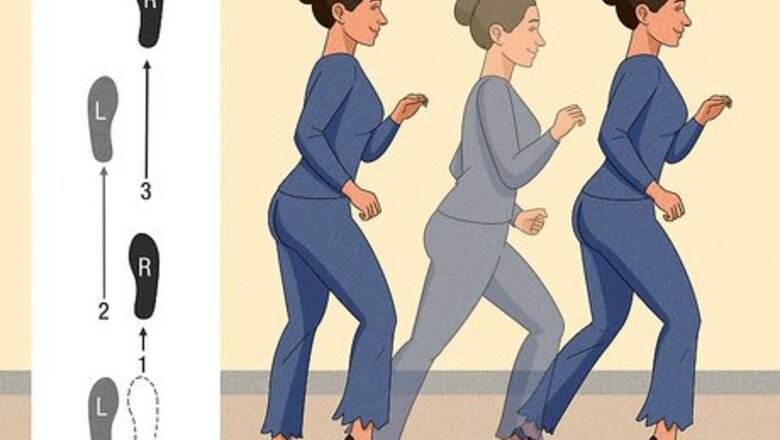
views
X
Research source
Alternatively, try doing the Mexican hat dance, which is easy to learn and was once considered the national folk dance of Mexico. If you have a dance partner, try another folk dance known as the "Santa Rita," or Mexican polka.
Learning Basic Salsa Steps
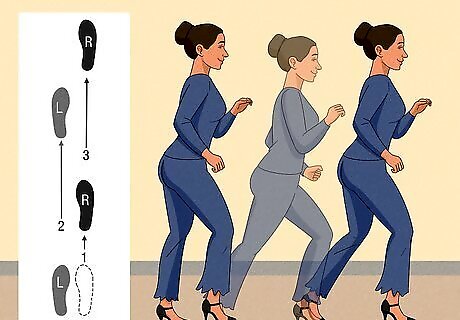
Take 3 steps forward in time with 3 beats of music. Start with the basic step because that is the foundation for the salsa dance. Keep your feet together and step forward with your right foot. Then, take step forward with your left foot and once more with your right foot. Swing your hips as you step forward to add flair to your movements.
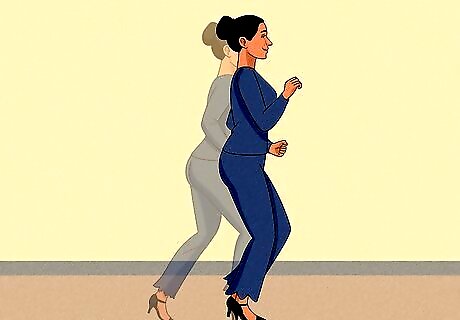
Shift your weight on the 3rd step and change directions. When you place your foot down on the 3rd beat of the music, bend your right knee slightly. Then, swing your left leg forward and hold the left leg in a half-extended position for 1 beat.
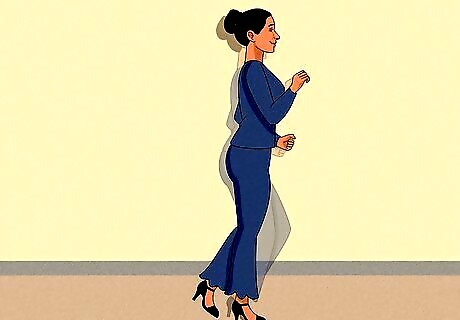
Push off of your right foot and swing your left leg backwards. As the right leg straightens, extend your left leg behind you. The momentum from this shift will add fluidity to your movements.
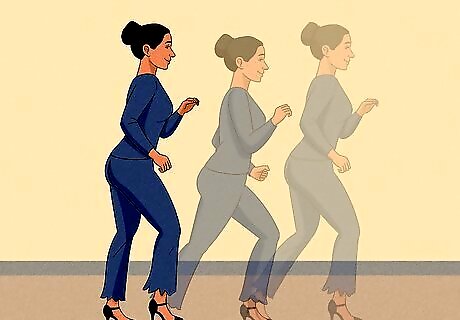
Take 3 steps backward over 3 beats and shift your weight again. Swing your hips as you move to add rhythm to your movements. On the last step, bend your left leg slightly and shift your right leg forward to change the direction of the dance again. These steps are the exact inverse of the steps you took at the beginning of the dance. Besides this, gentlemen should learn the footwork of the cross body lead and cumbia step.
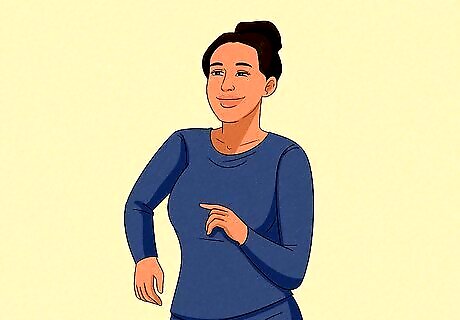
Hold your arms up at a 45 or 90 degree angle and move them in rhythm. Bend your elbows at an angle that's comfortable and lift your arms in front of you. Move your arms forward and backward in unison with your legs so that they maintain the same rhythm. Avoid leaving your arms at your side while salsa dancing, which will look awkward.
Doing a Traditional Mexican Hat Dance
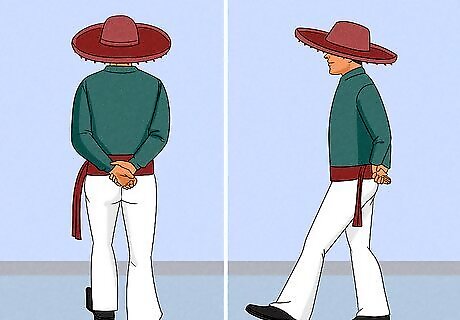
Start with your hands behind your back and your left heel in front of you. Place your arms behind you with your elbows bent at a 90 degree angle. Bend your right knee and extend your left leg forward. Keep your left leg straight and rest it on your heel.
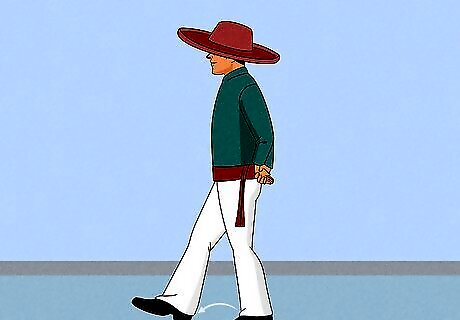
Bring in your left foot quickly and extend your right heel. On the second beat, bring your left heel back to meet your right heel. Quickly shift your weight onto your left heel. Project your right heel out in front of you, slightly to the side and rest on your right heel. These 2 movements should happen one after another within the space of 1 beat.
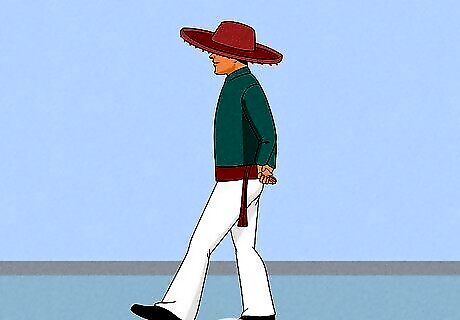
Repeat this movement with your left heel on the third beat. As soon as you rest your right heel, prepare to lift it back and extend your left leg again. Do this in the space of 1 beat. Try to keep your movements as fluid as possible so that the dance looks polished.
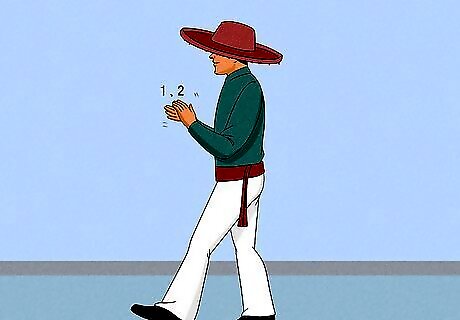
Clap 2 times after the first 3 moves. Pause in position with your left leg still extended. Bring your hands together in front of you. Clap 2 times very quickly. Your clapping should line up with a specific, 2-beat flourish in the music.
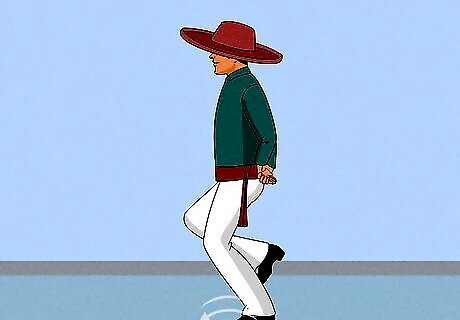
Speed up your steps as the tempo of the music increases. Keep your body in sync with the beat of the music, moving more quickly as the music gets faster and faster. Make sure to complete all of the main steps in the same 4 beat pattern. The Mexican Hat Dance is a fun activity at parties and family gatherings because the quickening tempo makes it challenging to keep up with!
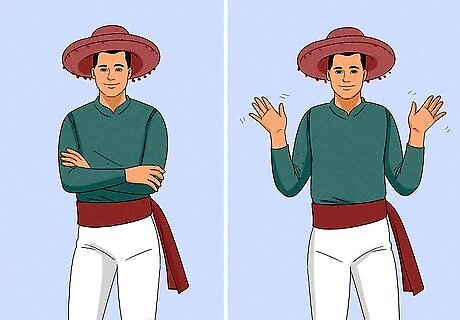
Cross your arms in front of you and "wave" to add flair. Cross your arms so that your right hand is on your left elbow. As you extend your left heel, lift up your left arm while keeping your left elbow bent. As you transition to your right heel, lower your left arm and lift your right arm to "wave." Your palms should be facing forward when "waving."
Dancing the Mexican Polka
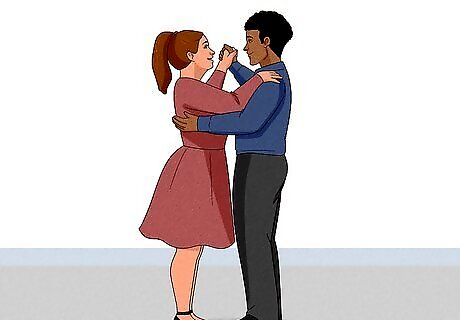
Stand shoulder-to-shoulder with your partner. Face your partner and place 1 hand on their shoulder or back, depending on who is leading. Extend your other arm completely to the side and grasp your partners hand. Rotate your body so that you are both facing your extended arm. Traditionally, the person who is leading should place their hand on their partner's lower back, while their partner places a hand on their shoulder.
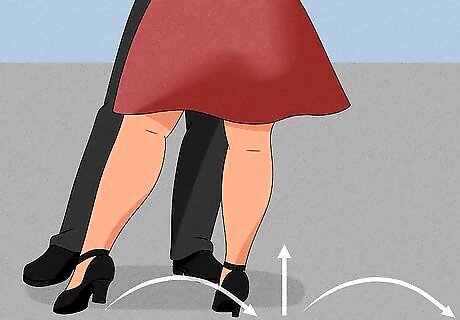
Take 4 polka steps forwards, alternating legs with each step. Initiate a polka step by lifting your lead foot and hopping lightly on the other foot. Launch into the step by touching your lead foot down quickly and bringing your other foot up behind it to meet it. Kick your lead foot back out to complete the step. Timing is paramount in any dance. A polka step should be done as smoothly and quickly as possible. Extend your other leg and start over on the opposite side. Do 2 polka steps on each side.
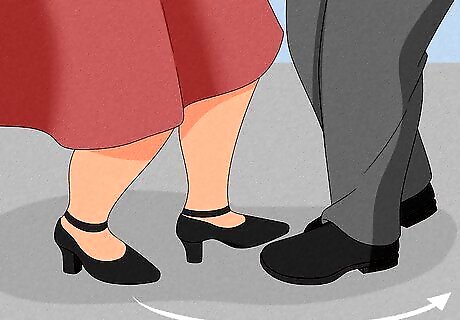
Cross your outside leg in front of you in an arc to meet your other foot. With your weight on the leg closest to your partner, extend your other leg. Pull it around in front of you in a semi-circle pattern. Bring your foot around to be right next to your other foot, with your inner arch facing outwards. Glide your foot across the ground smoothly for a clean-looking arc.
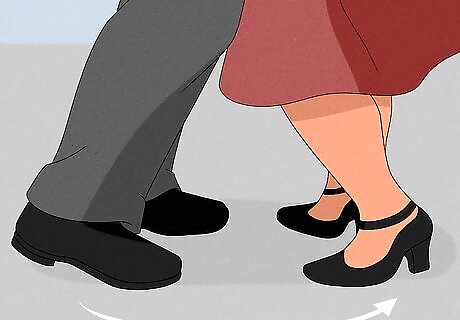
Bring your opposite foot around in the same kind of arc. Shift your weight onto the foot of your outside leg. Lift your other foot and bring it around in front of you in an arc with the inner arch facing out.
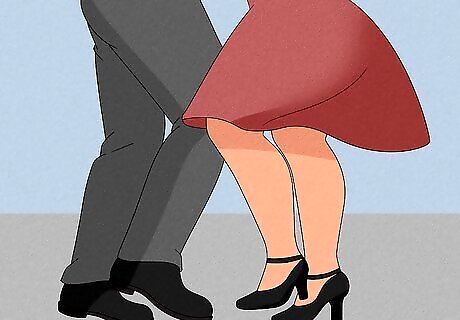
Bring your foot back around and stomp 4 times. Shift your weight onto the other foot. Circle your lead leg around quickly to bring you back to a normal standing position. Lift your lead leg and stomp it quickly on the ground 4 times. This movement should be done in sync with the music.
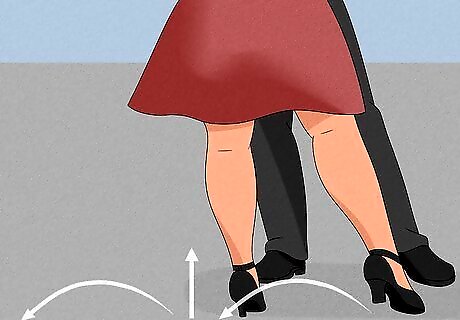
Do 2 sideways polka steps back to the start position and stomp 2 times. Extend the leg closest to your partner and shift your body so that you're facing your partner. Gallop sideways twice to get back to the starting position, then shift your weight onto the extended leg and stomp the opposite foot 2 times. Be as smooth as possible when changing feet and transitioning between moves. After completing this final step, you can start the dance over.
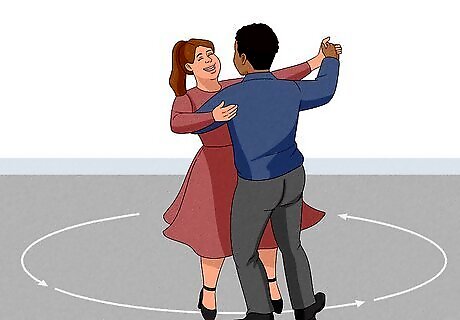
Add flair to the dance by doing the moves in a circular pattern. After you have mastered the basic steps of the dance, you can add another dimension to it by dancing in circles. As you take each polka step, angle your lead foot out so that you are rotating your position slightly. Practice this carefully to avoid getting dizzy while you're dancing. The person leading should initiate the rotating polka steps. Practice these turns in a relatively open space so you can move freely.

















Comments
0 comment